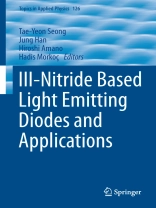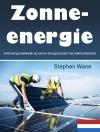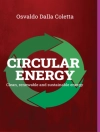Light emitting diodes (LEDs) are already used in traffic signals, signage lighting, and automotive applications. However, its ultimate goal is to replace traditional illumination through LED lamps since LED lighting significantly reduces energy consumption and cuts down on carbon-dioxide emission. Despite dramatic advances in LED technologies (e.g., growth, doping and processing technologies), however, there remain critical issues for further improvements yet to be achieved for the realization of solid-state lighting. This book aims to provide the readers with some contemporary LED issues, which have not been comprehensively discussed in the published books and, on which the performance of LEDs is seriously dependent. For example, most importantly, there must be a breakthrough in the growth of high-quality nitride semiconductor epitaxial layers with a low density of dislocations, in particular, in the growth of Al-rich and and In-rich Ga N-based semiconductors. The materials quality is directly dependent on the substrates used, such as sapphire, Si, etc. In addition, efficiency droop, growth on different orientations and polarization are also important. Chip processing and packaging technologies are key issues. This book presents a comprehensive review of contemporary LED issues. Given the interest and importance of future research in nitride semiconducting materials and solid state lighting applications, the contents are very timely. The book is composed of chapters written by leading researchers in III-nitride semiconducting materials and device technology. This book will be of interest to scientists and engineers working on LEDs for lighting applications. Postgraduate researchers working on LEDs will also benefit from the issues this book provides.
Tabla de materias
1: Introduction Part A. Progress and prospect of growth of wide-band-gap III-nitrides; Hiroshi Amano.- 2: Introduction Part B. Ultra-efficient solid-state lighting: likely characteristics, economic benefits, technological approaches; Jeff Y. Tsao, et al.- 3: Epitaxy Part A. LEDs Based on Heteroepitaxial Ga N on Si Substrates; Takashi Egawa and Osamu Oda.- 4: Epitaxy Part B. Epitaxial Growth of Ga N on Patterned Sapphire Substrates; Kazuyuki Tadatomo.- 5: Growth and optical properties of Ga N-based non- and semipolar LEDs; Michael Kneissl et al.- 6: Active region Part A. Internal Quantum Efficiency in Light Emitting Diodes; Elison Matioli and Claude Weisbuch.- 7: Active region Part B. Internal Quantum Efficiency; Jong-In Shim.- 8: Electrical properties, reliability issues, and ESD robustness of In Ga N-based LEDs; Matteo Meneghini, et al.- 9: Light extraction efficiency Part A. Ray Tracing for Light Extraction Efficiency (LEE) Modeling in Nitride LEDs; C. Lalau Keraly, et al.- 10: Light extraction efficiency Part B. Light Extraction of High Efficient Light-Emitting Diodes; Ja-Yeon Kim, et al.- 11: Packaging. Phosphors and white LED packaging; Rong-Jun Xie and Naoto Hirosaki.- 12: High voltage LED; Wen-Yung Yeh, et al.- 13: Color Quality of White LEDs; Yoshi Ohno.- 14: Emerging System Level Applications for LED Technology; Robert F. Karlicek, Jr.
Sobre el autor
Tae-Yeon Seong received his Ph D from the University of Oxford. He is a Professor of Materials Science and Engineering and currently Chair of Department of Nanophotonics at Korea University. His research focuses on the area of wide band-gap materials and devices (emitters, detectors and electronics) using Ga N and Zn O and developing these materials for illumination applications. He has authored and coauthored more than 340 peer-reviewed journal papers and holds 130 patents. He is a Fellow of the Institute of Physics (UK) and SPIE, an Associate Editor of Semiconductor Science and Technology, and an Editorial Advisory Committee Member of the Electrochemical Society Journals.
Jung Han is a Professor and currently the Chair of Electrical Engineering Department at Yale University. Before joining Yale University in 2001, he was a senior member of technical staff at Sandia National Laboratories, where he established a wide bandgap III-nitride semiconductor research effort for visible and ultraviolet LEDs. His current research activities includes the visible In Ga N light emitting structures for energy-efficient solid state lighting, nano-scale synthesis of Al Ga In N heterostructures, and hybrid inorganic-organic flexible optoelectronics. He has authored and coauthored more than 200 papers in peer-reviewed journals and holds 7 US patents. He is a fellow of Institute of Physics, UK. The awards he received include MRS Ribbon Award (2005) and R&D 100 (2004).
Hiroshi Amano received D.Eng from Nagoya University. He is a Professor at Department of Electrical Engineering and Computer Science, Nagoya University. In 1985, he developed low-temperature deposited buffer layers which provided the technology vendors to the development of high-quality group III semiconductor based LEDs and LDs. In 1989, he succeeded in growing p-type Ga N and fabricating p-n junction LEDs for the first time in the world. He has published more than 440 technical papers. The awards he received include: 1996 IEEE/LEOS Engineering Achievement Award, 1998 Japan Society for Applied Physics C Award, 1998 Rank Award, 2001 Marubun Academic Award, and 2002 Takeda Award.
Hadis Morkoç received Ph.D. from Cornell University, NY, and Honoris Causa from University of Montpellier II. He held positions at Varian Associates, Palo Alto, CA, University of IL at Urbana-Champaign, AT&T Bell Laboratories, Caltech and JPL, and Air Force Research Laboratories. He is with School of Engineering at VCU, Richmond VA. He is among the most cited with over 1600 publications. He is a Fellow of AAAS, APS and IEEE, and member of Sigma Xi (Life member), Eta Kappa Nu, Phi Kappa Phi (Life member), Sigma Pi Sigma, Tau, Beta Pi, and International Men of Achievement, and ISI highly cited authors.












